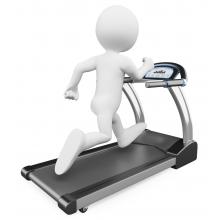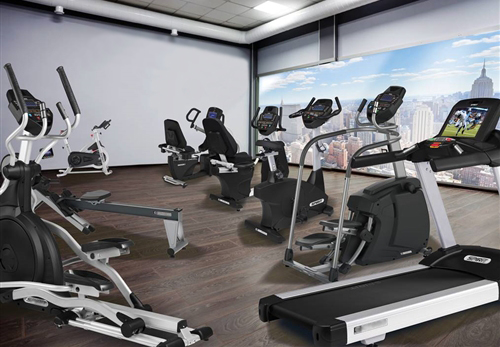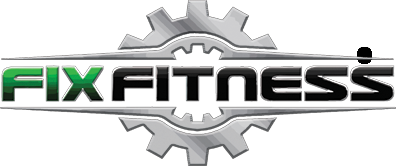



A Bay Area Premier Service Provider for your Cardio and Strength training equipment.
Tel: 925.421.0222
Tel: 925.421.0222









Copyright © 2016 by "Cimple Solutions LLC" · All Rights reserved · E-Mail: service@fixfitness.net


5 Tips to Keeping Your Treadmill Running Smoothly
Tip 1: Inspect Your Treadmill Regularly
Working out on a fitness machine that is faulty can result in serious accidents. For this reason, you should inspect the machine prior to each workout. Some of the most important things to watch out for are any loose bolts and screws and whether the running deck is dry. If it is, it may need lubrication before use. You should also have a look at the running belt for any signs of wear and tear. A common problem with thee running belt is that it may become frayed around the edges. The frame of the treadmill is subject to constant pounding and vibration during use, which means that its bolts may loosen up over time. You can use a hex key to inspect the frame of your treadmill for any loose screws and bolts. If you find any that are loose, tighten them, but be careful not to over tighten them.
Tip 2: Clean the Treadmill After Each Use
After each use, make sure you wipe down the sweat from the machine. Liquids can cause rust over time, which in turn can hinder the aesthetics and the functionality of your treadmill. The cleaning can be done with a dry or slightly moist rag or towel. Areas that need attention are the console, frame, and handrails. Any metal components should be checked in order to make sure they are dry. The perimeter of the walking deck should be cleaned once or twice a week, because this is an area where dust and debris accumulate inevitably. Whether it is because of dirt from the shoes used for training or poor air circulation in the house, contaminants can easily find their way beneath the belt, which may accelerate its wear.
Clean the Area Underneath the Treadmill
The dust from underneath the treadmill should also be removed regularly. This is an area about many treadmill owners forget when it comes to cleaning the machine. Even though it may not be that obvious, dust can bind to the walking belt and end up quite quickly inside the motor bonnet. Use a vacuum with an extender wand to remove the dust and debris from underneath the treadmill. If you want to get even easier access, you can fold up the machine in its storage position before starting cleaning.
Clean the Deck
The deck of a treadmill is one of the most expensive parts of the machine and you should pay special attention to it. Some treadmill decks require waxing and the wax should be applied by the user or it may be applied automatically from an internal reservoir, depending on the model. If your treadmill has an internal reservoir, make sure you keep it full. In addition to that, make sure the surface of the deck is clean from dirt. You should give it a wipe down with a soft cloth at least once a week.
Tip 3: Lubricate the Belt of the Treadmill
Each treadmill model has specific lubrication requirements and you should refer to the owner's guide for more information about how often to perform this operation. In most cases, newer treadmills do not require lubrication. If you own a model that requires belt lubrication, though, the owner's manual should inform you how to do this. A lubrication schedule should also be included. Not all models are the same, but generally you may need to lubricate the belt every three, six, or twelve months. Silicone wax, or 100 per cent silicone, is often used for lubrication, depending on the instructions provided by the manufacturer. In order to lubricate the running belt of your treadmill, lift it and spray the silicone or silicone wax up and down.
In the majority of cases, the manufacturer provides buyers with lubricant when they buy a new treadmill and it is recommended not to use another type. You should be careful when lubricating the treadmill as the lubricant may stain the floor. A towel can be placed underneath the treadmill in order to protect it from dripping lubricant.
Tip 4: Set the Tension of the Belt
If the running belt feels like it is slipping under your feet, it means that it became loose. The tension of the running belt should be checked out regularly. You can do this easily by lifting the middle of the belt on the side of the machine. When you do this, you should be able to lift it about 10 centimetres off the deck of the treadmill. If you think the belt is too loose or too tight, use the rear roller bolts on the back end of the machine to adjust it to the level recommended by the manufacturer.
Tip 5: Perform Routine Maintenance to Your Treadmill
Performing a routine maintenance to your treadmill is essential for keeping the machine in tip top condition. You should remember to always disconnect the machine from power prior to cleaning it. This eliminates the risk of electrical shock. You should verify that the power cord is unplugged before performing any kind of maintenance on your treadmill. Besides the routine maintenance described in the tips above, you should also check the motor each month and eliminate and dust particles that may have accumulated on it. This is important for prolonging the life of the electrical component.
Tip 1: Inspect Your Treadmill Regularly
Working out on a fitness machine that is faulty can result in serious accidents. For this reason, you should inspect the machine prior to each workout. Some of the most important things to watch out for are any loose bolts and screws and whether the running deck is dry. If it is, it may need lubrication before use. You should also have a look at the running belt for any signs of wear and tear. A common problem with thee running belt is that it may become frayed around the edges. The frame of the treadmill is subject to constant pounding and vibration during use, which means that its bolts may loosen up over time. You can use a hex key to inspect the frame of your treadmill for any loose screws and bolts. If you find any that are loose, tighten them, but be careful not to over tighten them.
Tip 2: Clean the Treadmill After Each Use
After each use, make sure you wipe down the sweat from the machine. Liquids can cause rust over time, which in turn can hinder the aesthetics and the functionality of your treadmill. The cleaning can be done with a dry or slightly moist rag or towel. Areas that need attention are the console, frame, and handrails. Any metal components should be checked in order to make sure they are dry. The perimeter of the walking deck should be cleaned once or twice a week, because this is an area where dust and debris accumulate inevitably. Whether it is because of dirt from the shoes used for training or poor air circulation in the house, contaminants can easily find their way beneath the belt, which may accelerate its wear.
Clean the Area Underneath the Treadmill
The dust from underneath the treadmill should also be removed regularly. This is an area about many treadmill owners forget when it comes to cleaning the machine. Even though it may not be that obvious, dust can bind to the walking belt and end up quite quickly inside the motor bonnet. Use a vacuum with an extender wand to remove the dust and debris from underneath the treadmill. If you want to get even easier access, you can fold up the machine in its storage position before starting cleaning.
Clean the Deck
The deck of a treadmill is one of the most expensive parts of the machine and you should pay special attention to it. Some treadmill decks require waxing and the wax should be applied by the user or it may be applied automatically from an internal reservoir, depending on the model. If your treadmill has an internal reservoir, make sure you keep it full. In addition to that, make sure the surface of the deck is clean from dirt. You should give it a wipe down with a soft cloth at least once a week.
Tip 3: Lubricate the Belt of the Treadmill
Each treadmill model has specific lubrication requirements and you should refer to the owner's guide for more information about how often to perform this operation. In most cases, newer treadmills do not require lubrication. If you own a model that requires belt lubrication, though, the owner's manual should inform you how to do this. A lubrication schedule should also be included. Not all models are the same, but generally you may need to lubricate the belt every three, six, or twelve months. Silicone wax, or 100 per cent silicone, is often used for lubrication, depending on the instructions provided by the manufacturer. In order to lubricate the running belt of your treadmill, lift it and spray the silicone or silicone wax up and down.
In the majority of cases, the manufacturer provides buyers with lubricant when they buy a new treadmill and it is recommended not to use another type. You should be careful when lubricating the treadmill as the lubricant may stain the floor. A towel can be placed underneath the treadmill in order to protect it from dripping lubricant.
Tip 4: Set the Tension of the Belt
If the running belt feels like it is slipping under your feet, it means that it became loose. The tension of the running belt should be checked out regularly. You can do this easily by lifting the middle of the belt on the side of the machine. When you do this, you should be able to lift it about 10 centimetres off the deck of the treadmill. If you think the belt is too loose or too tight, use the rear roller bolts on the back end of the machine to adjust it to the level recommended by the manufacturer.
Tip 5: Perform Routine Maintenance to Your Treadmill
Performing a routine maintenance to your treadmill is essential for keeping the machine in tip top condition. You should remember to always disconnect the machine from power prior to cleaning it. This eliminates the risk of electrical shock. You should verify that the power cord is unplugged before performing any kind of maintenance on your treadmill. Besides the routine maintenance described in the tips above, you should also check the motor each month and eliminate and dust particles that may have accumulated on it. This is important for prolonging the life of the electrical component.
Send Comments
Stair Stepper vs. Treadmill vs. Elliptical
If you squint your eyes a bit, stair steppers, treadmills and ellipticals look the same. In fact, they are very closely related because of their targeted muscle group: legs. All three are also used for cardio workouts and low-impact endurance training. So which one is right for you?
Stair Stepper:
This piece of equipment was first introduced to gyms in the 1980s. Most models require the user to continue an uphill climb of stairs that are approximately 8 inches apart, which is the minimum standard for steps anywhere.
Upper Body: None.
Lower Body: The entire exercise is propelled by the legs, working the glutes, quads and calves in a wavelike motion with little release to the muscles.
Cardio: No matter what speed you’re working, you’re pumping a lot of blood. This is an excellent cardio workout that can burn around 300 calories in a 30-minute session. Click here to try a 20-minute cardio workout with no equipment required!
Special Benefits: The speed of the workout is purely determined by the user. This means that the operator cannot “cheat” by slowing down or stepping off to the side, and all of the power is generated by the legs.
Cons: No upper body inclusion. Difficult to maintain for long periods of time due to monotony of movement. Causes a forward-leaning posture, rounding the lower back, and because of this lean, your actual calories-burned number is less.
Treadmill:
This is going to sound ridiculous, but the treadmill was originally the “tread wheel,” and was introduced to prisoners in London in the first half of the 19th Century. Fast-forward 150 years, and it split into the treadmill and stair stepper. The treadmill is one the most popular pieces of equipments in a home gym and requires little skill to use it.
Upper Body: None.
Lower Body: The legs steer the aerobic exercise from walking to full out sprint speeds. Most treadmills offer incline options to increase demand of muscles, especially the calves.
Cardio: Interval training is widely popular for treadmill users. Digital screens provide specific MPH speeds, inclines and often have an option to measure the user’s heart rate.
Special Benefits: All aspects of the workout can be controlled by the user.
Cons: Running on a treadmill doesn’t mirror running outside or on a track. Stride lengths are often shorter on a treadmill, and the surface area doesn’t allow for reflex training.
Elliptical:
Take the resistance of the stair stepper, the straightforward motion of the treadmill and the cycling of a bike – you get the elliptical. It followed the introduction of the stepper, and became popular due to its higher qualities of safety.
Upper Body: The biceps, triceps and upper back muscles are targeted through ski-like motions.
Lower Body: Exercise of low or high aerobics can be done without jarring the joints.
Cardio: Varies by what the user chooses, but can be an excellent aerobic and total body workout.
Special Benefits: Lower impact on the joints makes it a safe machine for those who are overweight and want to introduce cardio, and it balances the work of the quads and hamstrings.
Cons: Many people tend to abuse this machine or do not understand how to efficiently use it: not entering information, going too long, not reversing direction or changing workout.
If you squint your eyes a bit, stair steppers, treadmills and ellipticals look the same. In fact, they are very closely related because of their targeted muscle group: legs. All three are also used for cardio workouts and low-impact endurance training. So which one is right for you?
Stair Stepper:
This piece of equipment was first introduced to gyms in the 1980s. Most models require the user to continue an uphill climb of stairs that are approximately 8 inches apart, which is the minimum standard for steps anywhere.
Upper Body: None.
Lower Body: The entire exercise is propelled by the legs, working the glutes, quads and calves in a wavelike motion with little release to the muscles.
Cardio: No matter what speed you’re working, you’re pumping a lot of blood. This is an excellent cardio workout that can burn around 300 calories in a 30-minute session. Click here to try a 20-minute cardio workout with no equipment required!
Special Benefits: The speed of the workout is purely determined by the user. This means that the operator cannot “cheat” by slowing down or stepping off to the side, and all of the power is generated by the legs.
Cons: No upper body inclusion. Difficult to maintain for long periods of time due to monotony of movement. Causes a forward-leaning posture, rounding the lower back, and because of this lean, your actual calories-burned number is less.
Treadmill:
This is going to sound ridiculous, but the treadmill was originally the “tread wheel,” and was introduced to prisoners in London in the first half of the 19th Century. Fast-forward 150 years, and it split into the treadmill and stair stepper. The treadmill is one the most popular pieces of equipments in a home gym and requires little skill to use it.
Upper Body: None.
Lower Body: The legs steer the aerobic exercise from walking to full out sprint speeds. Most treadmills offer incline options to increase demand of muscles, especially the calves.
Cardio: Interval training is widely popular for treadmill users. Digital screens provide specific MPH speeds, inclines and often have an option to measure the user’s heart rate.
Special Benefits: All aspects of the workout can be controlled by the user.
Cons: Running on a treadmill doesn’t mirror running outside or on a track. Stride lengths are often shorter on a treadmill, and the surface area doesn’t allow for reflex training.
Elliptical:
Take the resistance of the stair stepper, the straightforward motion of the treadmill and the cycling of a bike – you get the elliptical. It followed the introduction of the stepper, and became popular due to its higher qualities of safety.
Upper Body: The biceps, triceps and upper back muscles are targeted through ski-like motions.
Lower Body: Exercise of low or high aerobics can be done without jarring the joints.
Cardio: Varies by what the user chooses, but can be an excellent aerobic and total body workout.
Special Benefits: Lower impact on the joints makes it a safe machine for those who are overweight and want to introduce cardio, and it balances the work of the quads and hamstrings.
Cons: Many people tend to abuse this machine or do not understand how to efficiently use it: not entering information, going too long, not reversing direction or changing workout.




Here are a few very common issues that people often have with Treadmill walking belts... This will help you determine what's actually happening and hopefully point you in the right direction to getting it fixed.
If you can walk on your treadmill but it shuts down during a workout, it is normally caused by a friction problem with the belt and deck. Here are the most common symptoms and solutions:
This will go over the proper procedure when attempting to adjust the tension or center the walking belt on your treadmill.
Now if your Treadmill is no longer running smoothly, we've provided a few Tips below for some of the more common issues related to treadmills and their walking belts...
Disclaimer: Fix Fitness LLC does not warrant or guarantee that any of the following tips will completely cure any, or all, issues with your equipment. Our goal is to provide you some information that we've believe to be the most accurate, to the best of our knowledge, in order to assist you in saving time, money, and get you back on track towards reaching your fitness goals. We hope that you find your experience here enjoyable, simple and worthwhile of many trips back. Fix Fitness nor any of its subsidiaries, divisions, affiliates, agents, representatives or licensors shall be liable to you or anyone else for any loss or injury or any direct, indirect, incidental, consequential, special, punitive or similar damages arising out of your access or use of, or your inability to access or use, or arising out of any action taken in response to or as a result of any information made available on this website or any other site that has linked to the content provided on this website, with or without the discretion of Fix Fitness LLC.
We've realized that people who are interested in fitness are naturally competent, bright and inquisitive. Well, we may be a little biased; but, just in case you have a question to ask one of the Equipment Experts at Fix Fitness, we've taken the initiative to compile a short list of some of the most Frequently Asked Questions - and the answers, too, of course.
Click on a question below for complete details...
Click on a question below for complete details...
- One of the most common questions that customers always seem to ask is, "Is there anything that I can be doing, on my own, to help keep my machine running well until its time to call Fix Fitness for another service?"
This is a very good question.. But there are now so many different types of machines on the market and just about every one of them has their own differences, it sets the stage for an extremely broad range of answers...
Now since this isn't the only common question we get from our customers on a regular basis, we decided to post a section on our website to offer some answers to all of those questions we tend to get on a regular basis. We also decided to also provide some fairly easy, straight forward, maintenance and troubleshooting tips for your at home fitness equipment or small gym. The main purpose of posting these articles is to hopefully eliminate some downtime, avoid seemingly pointless, unnecessary service calls and at the end of the day, save you some money-- Because Let's face it, I think we can all agree that hiring a technician out for a service call to tighten up the walking belt on your two month old treadmill isn't entirely necessary for most people.
- My treadmill's Walking Belt Stops or Slows down when I step on it.
-
Here are a few things you can look into to see why your running belt is stopping when you walk on treadmill.
• Let’s remove the hood cover on your treadmill.
• Now run the treadmill at 2.5mph with no one on it and see how it runs.
• Now go ahead and step onto the belt and see what happens.
1st Few things to look at when you’re running belt stops.
A) When the running belt stops does the Drive Motor also stop?
B) If yes then it could be a weak Drive Motor or bad Motor Controller.
2nd When the running belt stops does the Drive Motor continue to run and also does the drive belt continue to run?
A) If the Drive motor still runs and Drive Belt does not then you will need to tighten down the Drive Belt or replace the Drive Belt.
3rd When the running belt stops and Drive Motor & Drive Belt continues to spin does the entire front roller rotate?
A) If the entire front roller continues to spin then you will need to adjusted running belt.
B) If just the pulley on the front roller continues to spin, then you will need to replace the entire front roller.
This should help you trouble shoot exactly what is wrong with your treadmill, and remember to lube your Running Belt & Deck every 6 months.
- Should I Lubricate My Treadmill?
-
If you do nothing else, no other treadmill maintenance, then at least lubricate your treadmill. Oiling the running deck will prevent wear and cracking to the deck and belt and will reduce friction on the motor. Over time most treadmills will require belt replacement and deck changes but by lubricating at the correct interval you can dramatically extend the life of these components. Likewise motor wear can be expensive to put right. A straining motor will burn brushes quickly. Follow a regular lubrication regime and components should last the distance.
Before marching on with the task check the specifications of your machine. There are a number of machines on the market that do not require lubrication. They are generally factory waxed for use and lubricants are not recommended for these machines.
- How Often Should I Lubricate My Treadmill?
-
If you use your treadmill on a daily basis you are going to have to oil the deck more often than the casual user. If you are on the machine regularly look to lubricate the machine every 150 miles. If you are a regular treadmill runner and have a heavy frame/build consider shortening up the duration between lubrication because you will be putting more friction through the components than lighter users! If the machine goes for long periods without use, then try to remember to oil the treadmill every 3 – 6 months to keep the belt and deck in good order and avoid cracking.
- What Can I Use To Lubricate My Treadmill?
-
Generally there are two types of treadmill belt on the market, fabric and rubber. Rubber, being a more modern material is becoming the most common type of belt. Each belt requires a different type of treadmill lubricant. If your running machine has a fabric belt you need to use a paraffin based lubricant. If your treadmill belt is rubber, a silicon based lube should be used. Sprays or liquids are equally good and both lube types can be found cheaply online. The downside to using a spray, is that it typically doesn't last quite as long and it's alot harder to determine exactly how much of it you're applying.
Keep in mind that there are, in fact, other types of walking belts out there that don't require the use of either silicone lubrication OR any type of wax for lubrication. These belts are referred to by the manufacturers are maintenance free walking belts. When it comes to a treadmill, any statement with the words "maintenace free" tends to be a concept that's a bit tough to grasp. At fix fitness, we've come to the realization that anything that has moving parts in it is going to require some sort of maintenance at one point or another.
- Can I Use WD40, Vegetable or Motor Oil To Lube My Treadmill?
-
You could but you shouldn’t. Motor oils or WD40 type lubricants will break down rubber belts. The belts will crack and disintegrate quickly after using these petrol lubricants.
Vegetable oil will dry and become sticky and collect dust and dirt in the open air causing long term damage to your machine.
Avoid temptation, buy a $10 treadmill oil online.
- Can I Use A Treadmill On A Carpet?
-
Many people buying a treadmill for the first time ask “do I need a mat under my treadmill?” It is a reasonable question and as mats are so cheap often they can be a good idea. Some people think they have a loose end of old carpet why not just use that? The assumption in both cases is that the mat or carpet will prevent the treadmill from damaging the floor, but often you need to consider using a mat to protect the treadmill from the floor surface. With these factors in mind can I use a treadmill on a carpet?
In short if you don’t want your treadmill to age prematurely and you value your carpet, go get a mat. If you are not concerned with damaging the carpet and are prepared to risk the machine over the long run, using the treadmill on carpet can be a good way to keep noise and vibration down.
-->Extend The Life Of Your Treadmill With A Mat<--
Placing your treadmill on a carpet may seem to be a good idea, you get to reduce vibration and dampen down noise, if you have tiled or timber floors a piece of old carpet can prevent scratches. The problem is that often a carpet will damage or shorten the life of the treadmill.
No matter how clean your house, the fibers in a carpet tend to catch dust and dirt. If you use your treadmill on carpet this dust and dirt is liable to be drawn into the inner workings of the treadmill over time. Carpet fiber will quickly damage electric motor brushes and contribute to bearing wear. Using a mat can reduce the impact of carpet dirt and dust and keep your treadmill healthy.
- What's the Best Treadmill out right now
-
When it comes to this question, its obviously a matter of opinion. And let's face it- everybody has always got one, right?
The best thing to do is to ask around and reasearch, just like you're shopping for anything else. Before you begin, the best thing to do for anybody is to brainstorm what exactly your goals are. How often you plan on using the treadmill to achieve those goals. Ask yourself if anyone else is planning on using the unit besides you. Are you a walker or a runner? Is space going to be an issue?
When researching online, there are tons of review websites out there. You main thing that you want to keep in mind is that alot of those reveiew websites are secretly owned by certain fitness equipment manufacturers. So while the website might appear to have a somewhat diverse opinion on the different brands, you're really getting a completely biased opinion and information that is really quite far from the truth...
- Well what is the Best Brand treadmill on the Market
-
Another question that is a matter of opinion. And I can assure you that we definitely have ours... But since we sell a variety of equipment from many different manufacturers, we'd rather not put our opinion out for the showing, in this regard. With that said, almost all fitness equipment in today's market is manufactured overseas. Although this is often not a bad thing, it can be stressful to get an accurate opinion when it comes to making the decision on choosing the machine that is right for you. Having years of experience working on essentially every type of fitness machine along with almost every known manufacturer out there, we know first hand which factories have their acts together and which ones that don't. We know who has it together because we repair equipment from just about every manufacturer on a daily basis. Altough We are not currently in the business for New Equipment Sales at this time, we are more than happy to make any unbiased recommendations and point you in the right direction.
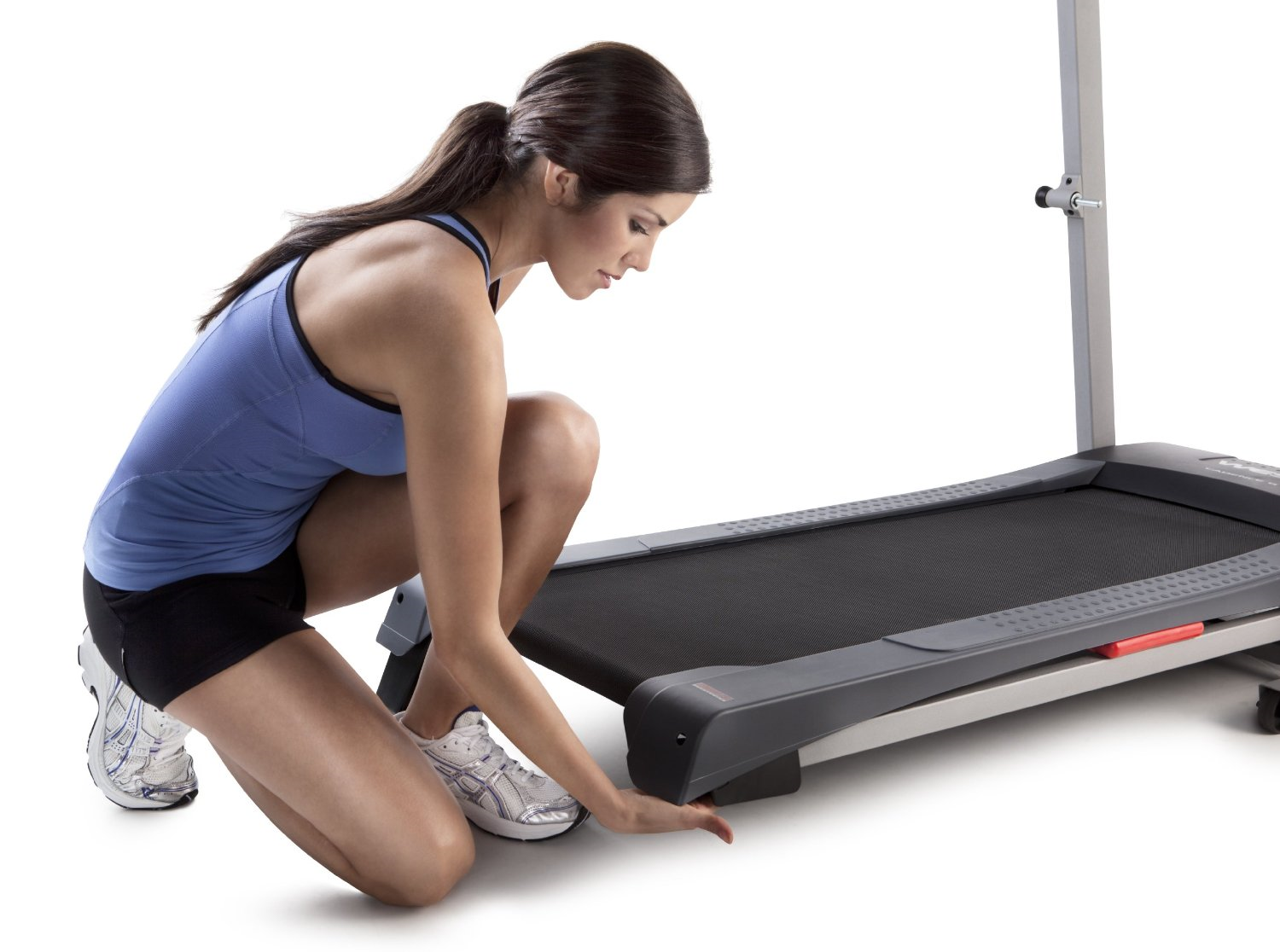
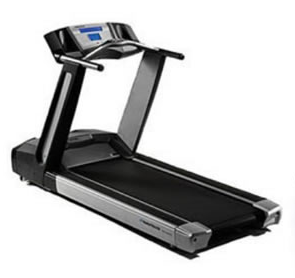

FAQ

